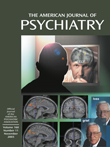Variables That Affect the Clinical Use and Abuse of Methylphenidate in the Treatment of ADHD
Abstract
OBJECTIVE: Methylphenidate, the most common treatment for attention deficit hyperactivity disorder (ADHD), increases extracellular dopamine in the brain, which is associated with its reinforcing as well as its therapeutic effects. The authors evaluated variables that distinguish these two properties. METHOD: The brain imaging and clinical literatures were analyzed to identify variables that contribute to the abuse liability as well as to the clinical efficacy of methylphenidate. RESULTS: Four variables were identified. 1) Dose—there is a threshold for methylphenidate-induced dopamine increases to be perceived as reinforcing and to produce therapeutic effects. 2) Pharmacokinetics—the reinforcing effects of methylphenidate are associated with rapid changes in serum concentrations and presumably fast dopamine increases (as achieved with intravenous injection or insufflation), whereas the therapeutic effects are associated with slowly ascending serum concentrations and presumably smoothly rising dopamine levels (as achieved with oral administration). 3) Individual differences—sensitivity to methylphenidate varies across individuals and sets a threshold for blood and brain levels required for reinforcing effects (drug liking) and for therapeutic effects (symptom reduction). 4) Context—the effects of methylphenidate are modulated by different settings in abuse (rituals of self-administration and powerful conditioning) and in clinical use (external demands of low activity and focused attention). CONCLUSIONS: Reinforcing effects occur when methylphenidate elicits large and fast dopamine increases that mimic those of phasic dopamine cell firing, whereas therapeutic effects occur when methylphenidate elicits slow, steady-state dopamine increases that mimic those of tonic firing. Thus, the characteristics of clinical use (low doses administered orally and titrated for therapeutic effects) constrain methylphenidate’s abuse.



